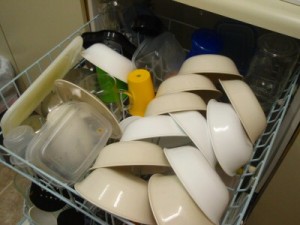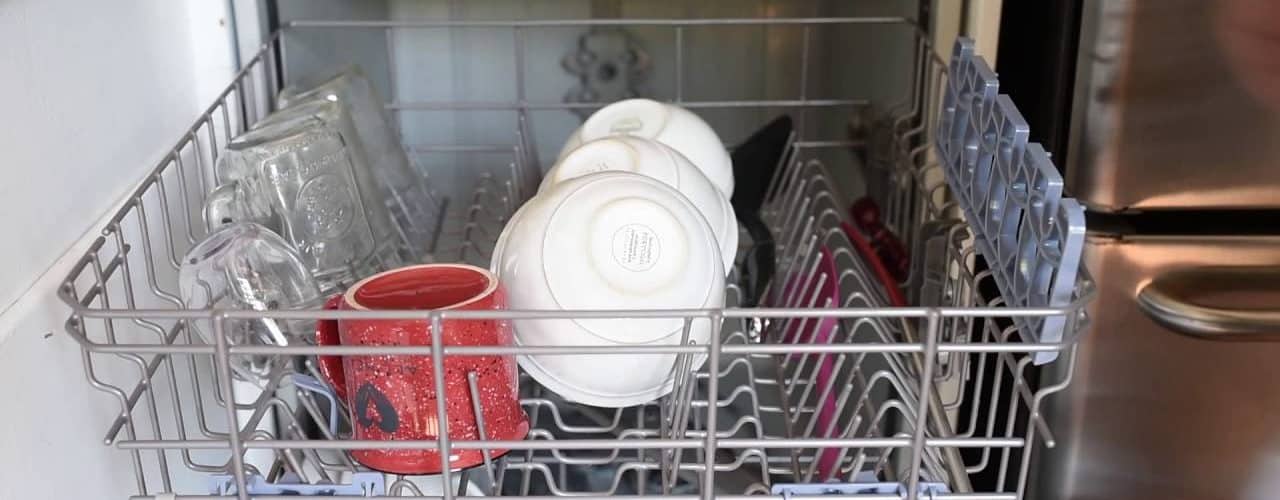
Loaded Dishwasher
<>
It may seem a simple task, but there is a correct way to load a dishwasher. Following these easy guidelines can result in cleaner dishes as well as save time and energy.
1. Use a fork or napkin to scrape any excess food into the trash or garbage disposal.
2. Pre-rinse: Some dishwashers may require that dishes be pre-rinsed. Others don’t. Check the manufacturers recommendations for your dishwasher, but if your dishes aren’t coming out clean enough for you without pre-rinsing, then you may need to start pre-rinsing.
3. If you do pre-rinse, it is easier to do it right after using a dish has been used and before food dries and sticks to the surface.
4. Warm, soapy water works well for pre-rinsing. Get the plate wet and use a brush to gently remove any food residue. Dishes with food that has already hardened or sticky food residue may need to be soaked for a short time before going into the dishwasher.
5. Not all soaps are created equal. Check the ratings for various dishwasher detergents or just try a few to determine which ones work best for you. If you have hard water that leaves spots or film on your dishes, you may also want to add a water softening product such as Rain Drops. Just add a tablespoon of the softener in the soap dispenser along with your detergent.
6. Load your plates in the bottom rack of the dishwasher facing toward the center. Lean them in and down if they lean at all. This will allow your dishwasher’s sprayers to reach them more effectively. Also try to keep some spacing between dishes to allow the spray to reach all of your plates’ surfaces.
7. Cups, glasses and bowls should go on the top rack. Be sure to tilt the bowls to face down so the sprayers can reach the inside of the bowls. Tilting them down also allows the bowls to drain and dry more thoroughly.
8. Any plastic products should go on the top level of your dishwasher whenever possible. The top rack of your dishwasher is not subjected to as much heat as the bottom, and some plastics may warp or even melt on the bottom rack.
9. Pots and pans should be loaded face down on the bottom rack. Again, this allows for better access to the sprayers as well as proper drainage and drying.
10. Silverware and utensils should be loaded with handles down in the utensil basket on the bottom rack.
11. Larger utensils that may not fit in the utensil basket can go on the top rack. Just lay them down across the top.
12. Larger items like cutting boards should be loaded on the outside edges of the bottom rack. Be sure larger items like this do not interfere with the rotation of any of your dishwasher’s sprayers. You may want to manually spin the spraying mechanism to be sure it can still move freely.
13. Check any glass or breakable objects like glasses to be sure they are not touching. The vibrations while the dishwasher is running could cause these items to crack if they are touching each other.
Related Video:
Basic Home Maintenance : How to Load & Run a Dishwasher
<>
<>



